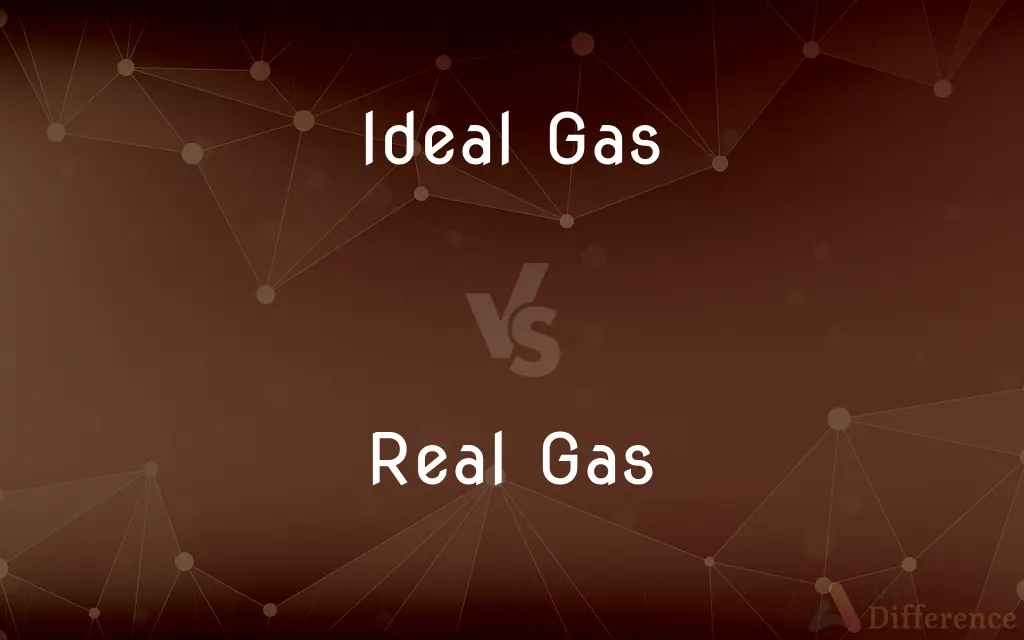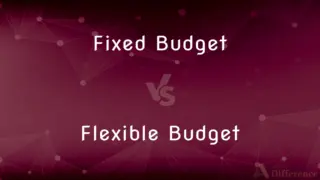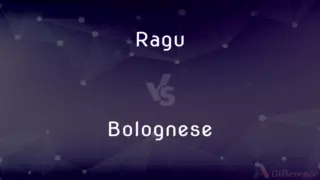Ideal Gas vs. Real Gas — What's the Difference?
Edited by Tayyaba Rehman — By Fiza Rafique — Published on December 5, 2023
An Ideal Gas follows the ideal gas law perfectly with no intermolecular forces, while a Real Gas deviates from this law due to the existence of intermolecular forces and finite volume.

Difference Between Ideal Gas and Real Gas
Table of Contents
ADVERTISEMENT
Key Differences
An Ideal Gas is a theoretical concept used in physics and chemistry to simplify calculations and models. This gas strictly adheres to the ideal gas law, which relates pressure, volume, temperature, and the number of particles. When considering an Ideal Gas, one assumes that the gas particles are point masses with no volume and that there are no intermolecular forces between them.
In contrast, a Real Gas is what we observe in reality. Real Gases do not always obey the ideal gas law, especially under high pressure or low temperature conditions. This deviation stems from the fact that gas particles in a Real Gas do have a finite volume, and intermolecular forces, such as attraction or repulsion, do exist.
It's essential to recognize that while the Ideal Gas model provides a beneficial starting point for understanding gas behavior, it's an oversimplification. When we analyze the behavior of gases under many standard conditions, the Ideal Gas model works relatively well. However, under extreme conditions, such as high pressures or very low temperatures, the behavior of a Real Gas can deviate significantly from the ideal.
On the other hand, the concept of Real Gas takes into account these deviations by incorporating corrections to the ideal gas law. These corrections consider the finite volume of gas particles and the attractive and repulsive forces between them. Van der Waals equation is one such example that accounts for these deviations in Real Gases.
Lastly, while both concepts, Ideal Gas and Real Gas, have their places in scientific discourse, it's vital to apply them appropriately. The Ideal Gas model serves as an excellent foundation for understanding basic gas behavior, whereas the Real Gas model offers a more nuanced view suitable for specific scenarios.
ADVERTISEMENT
Comparison Chart
Intermolecular forces
No intermolecular forces
Exhibits intermolecular forces
Volume of gas particles
Particles have no volume
Particles have a finite volume
Adherence to ideal gas law
Strictly follows the ideal gas law
Deviates from the ideal gas law under certain conditions
Applicability
Theoretical concept for simplified models
Observed in real-world scenarios
Equations used
Ideal gas law (PV=nRT)
Corrected equations like Van der Waals equation
Compare with Definitions
Ideal Gas
It assumes gas particles have no volume.
The behavior of an Ideal Gas assumes that its molecules are point masses.
Real Gas
A Real Gas deviates from the ideal gas law under specific conditions.
Under high pressure, the behavior of a Real Gas might not match the predictions of the ideal gas law.
Ideal Gas
It provides a starting point for understanding gas behavior.
Scientists often begin with the Ideal Gas model before delving into the nuances of Real Gases.
Real Gas
Real Gas behavior can be described using corrected equations.
The Van der Waals equation is used to model the behavior of a Real Gas, accounting for its deviations from ideality.
Ideal Gas
An Ideal Gas strictly follows the ideal gas law.
In physics classrooms, an Ideal Gas is often used for basic calculations to avoid complexities.
Real Gas
It's what we observe in practical scenarios.
When analyzing gases in the lab, scientists often have to account for the properties of a Real Gas.
Ideal Gas
It is a theoretical concept used for simplifications.
An Ideal Gas is more of a mathematical convenience than a physical reality.
Real Gas
Gas particles in a Real Gas have a finite volume.
The actual size of gas molecules in a Real Gas can impact its behavior, especially under high pressures.
Ideal Gas
An Ideal Gas has no intermolecular forces.
In the Ideal Gas model, gas particles neither attract nor repel each other.
Real Gas
Real Gases have intermolecular forces.
The attraction between molecules in a Real Gas can cause it to liquefy under certain conditions.
Common Curiosities
Are there any gases that behave ideally in nature?
No real gas behaves perfectly as an Ideal Gas; however, many gases come close to this behavior under standard conditions.
How does a Real Gas differ from an Ideal Gas?
A Real Gas deviates from the gas laws under certain conditions, such as high pressure or low temperature, whereas an Ideal Gas always follows them.
Do Real Gases have a volume and interaction between molecules?
Yes, unlike Ideal Gases, Real Gases have a finite volume and experience interactions between molecules.
What is an Ideal Gas?
An Ideal Gas is a theoretical concept in thermodynamics where the gas follows the gas laws perfectly under all conditions.
Under what conditions does a Real Gas deviate most from ideal behavior?
A Real Gas deviates most from ideal behavior at very high pressures and very low temperatures.
Why can't Real Gases always be described by the Ideal Gas Law?
Real Gases have particle interactions and volume, which can cause deviations from the Ideal Gas Law, especially under extreme conditions.
Are the deviations of Real Gases from ideal behavior always significant?
No, for many practical purposes and under standard conditions, the deviations can be negligible, allowing the Ideal Gas Law to be used.
Is it possible for a Real Gas to act like an Ideal Gas under certain conditions?
Yes, under conditions of low pressure and high temperature, many Real Gases behave almost like Ideal Gases.
What are the implications of a gas not behaving ideally?
When a gas doesn't behave ideally, predictions made using the Ideal Gas Law may not be accurate, and more complex equations, like the Van der Waals equation, might be needed.
Are Ideal Gases purely hypothetical?
Yes, while no gas is truly ideal, the concept helps simplify and understand gas behavior under many conditions.
What factors cause a Real Gas to deviate from the Ideal Gas behavior?
Molecular interactions, the finite size of gas molecules, and external conditions like pressure and temperature cause deviations.
Why is the Ideal Gas concept important in thermodynamics?
The Ideal Gas concept simplifies calculations and provides a reference point to understand and predict the behavior of real gases.
What equation represents the behavior of an Ideal Gas?
The behavior of an Ideal Gas is represented by the Ideal Gas Law: PV = nRT, where P is pressure, V is volume, n is the number of moles, R is the universal gas constant, and T is temperature.
Why don't Ideal Gases have interactions between their particles?
By definition, Ideal Gases are made up of particles with no volume and no forces acting between them, making them non-interactive.
Can the behavior of all Real Gases be predicted?
While many Real Gases can be predicted using modified gas laws, certain conditions or gases may present unpredictable behaviors due to complex molecular interactions.
Share Your Discovery

Previous Comparison
Fixed Budget vs. Flexible Budget
Next Comparison
Ragu vs. BologneseAuthor Spotlight
Written by
Fiza RafiqueFiza Rafique is a skilled content writer at AskDifference.com, where she meticulously refines and enhances written pieces. Drawing from her vast editorial expertise, Fiza ensures clarity, accuracy, and precision in every article. Passionate about language, she continually seeks to elevate the quality of content for readers worldwide.
Edited by
Tayyaba RehmanTayyaba Rehman is a distinguished writer, currently serving as a primary contributor to askdifference.com. As a researcher in semantics and etymology, Tayyaba's passion for the complexity of languages and their distinctions has found a perfect home on the platform. Tayyaba delves into the intricacies of language, distinguishing between commonly confused words and phrases, thereby providing clarity for readers worldwide.











































